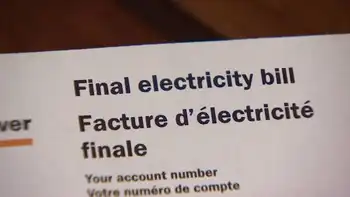Ottawa takes aim at coal power
By Globe and Mail
NFPA 70b Training - Electrical Maintenance
Our customized live online or in‑person group training can be delivered to your staff at your location.

- Live Online
- 12 hours Instructor-led
- Group Training Available
Any new coal plants will have to include highly expensive – and unproven – technology to capture greenhouse gas emissions and inject it underground for permanent storage, Environment Minister Jim Prentice said in an interview.
Ottawa also plans to impose absolute emission caps on utilities' existing coal-fired power plants and establish a market-based system to allow them to buy credits to meet those targets, Mr. Prentice said.
Electricity users in Alberta, Saskatchewan and Nova Scotia would be hit hard by the new rules, as their provinces rely on coal for more than 70 per cent of their power, and alternatives will be costly.
“The approach that we've been working towards involves a cap-and-trade system relating to thermal coal, and the requirement of phasing out those facilities as they reach the end of their useful, fully-amortized life,” Mr. Prentice said.
“The concept is that, as these facilities are fully amortized and their useful life fully expended, they would not be replaced with coal,” the minister said.
He added that coal would be an option if it produced near-zero greenhouse gas emissions. The minister was attending a meeting of major emitting countries in Washington.
He said the new regulations will be released later this year – well before he travels to Copenhagen in November for negotiations on a new, global climate change treaty.
The government has already adopted new emission standards for vehicles – following the lead of the United States – and will also release regulations aimed at major industrial emitters, including Alberta's oil sands producers.
It has set a target of having a 90-per-cent emission-free electricity sector by 2025, a goal that will require increased use of nuclear, wind power, hydro and other renewables. Given Canada's long dependence on hydro in Quebec and British Columbia, and nuclear and hydro in Ontario, the country already has one of the least emitting electricity sectors in the developed world.
Still, coal-fired electricity represents roughly 18 per cent of Canada's current emissions, and eight of the 10 largest greenhouse gas emitters in the country are coal-fired power plants. They include Ontario's giant Nanticoke station, which the Liberal government has vowed to close by 2014 in its effort to be coal-free.
Most of Canada's fleet of coal-fired power plants date back to the 1970s, and would likely be decommissioned between 2020 and 2025. However, Alberta has one new operating plant at Genesee and another being built at Keephills that would operate for as much as 40 years.
Both Alberta and Saskatchewan have forecast large increases in electricity demands, especially in Alberta where expected growth in oil sand production and refining would drive up industrial electricity demand. Both provinces have massive coal reserves and said they will continue to rely on it to power their grids.
Jason Chance, a spokesman for the Alberta Ministry of Energy, said the province is committed to developing carbon-capture-and-storage technology, noting the government has allocated $2-billion for pilot projects in the power sector and oil industry.
Pierre Guimond, president of the Canadian Electrical Association, warned the new regulations would drive up electricity costs to customers in the provinces that are reliant on coal. “It's going to be awfully expensive,” he said.
He noted that the carbon-capture technology remains unproven and prohibitively expensive. However, some utilities have built modern coal plants that allow for the capturing of carbon dioxide, and oil companies often use carbon dioxide to inject into crude reservoirs to stimulate production. The industry faces major challenges, however, in adopting an integrated capture-and-storage system within the next decade.
Epcor Power LP, of Edmonton, has spent more than $30-million in developing new combustion technology, and is hoping to win provincial funding to build a capture-and-storage project, along with its partner Calgary-based Enbridge Inc.
“We are absolutely supportive” of the federal proposal, said Epcor's executive vice-president, Brian Vaasjo. “We know that as the existing fleet of coal plants reach the end of their economic lives it will be important for there to be technology available that can be utilized to continue the use of coal.”
He said the new coal technology may even be cost competitive with nuclear and wind, though far more expensive than traditional coal-fired power. He added, however, that Alberta must be able to exploit its coal reserves.
“We're richer in coal than we are in oil sands, so it is critical that we be able to utilize that resource,” he said.











